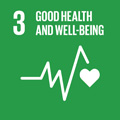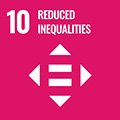- Docente: Stefania Toselli
- Credits: 6
- SSD: BIO/08
- Language: Italian
- Moduli: Stefania Toselli (Modulo 1) (Modulo 2)
- Teaching Mode: In-person learning (entirely or partially) (Modulo 1); In-person learning (entirely or partially) (Modulo 2)
- Campus: Rimini
- Corso: First cycle degree programme (L) in Exercise and Sport Sciences (cod. 8766)
-
from Feb 23, 2026 to Mar 30, 2026
-
from Apr 13, 2026 to Jun 01, 2026
Learning outcomes
By the end of the course, students will have gained the skills to assess the characteristics of the human body using standardized measurement techniques and interpret these characteristics in relation to the variability induced by environmental factors. This includes a particular focus on health status, as well as motor, sports, and ergonomic contexts. Additionally, through hands-on laboratory work, students will be able to accurately measure and manage certain linear dimensions.
Course contents
Anthropometry: Historical Overview, Approaches, Study Methods, and Main Applications
Population Genetics Concepts
Hardy-Weinberg equilibrium: concepts and implications. Factors of variability in human populations in evolution and differentiation.
Anthropometric and Ergonomic Research
Designing anthropometric and ergonomic research:
- Sampling, selection of measurements, data recording, body planes, and spatial orientation.
- Measurement techniques, tools used, and analysis of variability in key anthropometric parameters: height, seated height, weight, transverse diameters, lengths, circumferences, and adipose tissue.
- Body proportion indices: evaluation methods and analysis of relative variability.
Constitutionalism and Somatotype
Elements of constitutionalism. Somatotype analysis: evaluation methods, applications, and associated variability.
Body Composition
Techniques for assessing body composition and their applicability, with particular focus on plicometric and bioelectrical impedance methods. Factors of variability in body composition.
Anthropometry and Obesity
Study of obesity in relation to anthropometry.
Body Image Perception
Assessment and interpretation of body image perception and the factors influencing it.
Growth
Methods for studying growth and key anthropometric aspects related to development.
Growth standards and indicators of biological maturity. Factors influencing growth.
The secular trend and its causes.
Aging
Methods for studying aging: biological variability related to aging, with a particular focus on changes in body composition. Factors influencing aging and interpretation of the process.
Ergonomics
Ergonomic investigation methods and practical applications. Application of anthropometry in ergonomic contexts.
Readings/Bibliography
-
Ø Manuale di Antropologia. Evoluzione e biodiversità umana (a cura di Luca Sineo, Jacopo Moggi Cecchi), 2022, Utet Università
-
Ø F.Facchini:" Antropologia" -UTET, 1995 (some parts of the book)
Ø Norton, Olds:"Anthropometrica" UNSW Press, 2006
Ø Lohman, Roche, Martorell- "Manuale di riferimento per la standardizzazioneantropometrica" EDRA ed., 1992
Ø Eston R. Reilly T. .”Kinanthropometry and exercise physiology laboratory manual- vol 1 : Anthropometry” Routledge ed., 2001
Ø Frisancho A. R. Anthropometric standard. An interactive Nutritional reference of Body Size and Body Composition for children and adults. Ann Arbor - The University of Michigan Press, 2011
The lecture slides will be provided to students in small batches throughout the course.
Teaching methods
Oral lectures and practice.
In consideration of the types of activities and teaching methods adopted, the attendance of this activity requires the attendance of all students at Modules 1 and 2 in e-learning mode and the attendance at Module 3 of specific training on safety and health in the study places. Information on the dates and methods of attendance of Module 3 can be consulted in the specific section of the degree program website.
Assessment methods
The exam aims to assess the achievement of the following learning objectives:
- Knowledge of the measurement techniques and the meaning of the main anthropometric measures.
- Understanding the methodologies used to define body indices, constitution, and body composition.
- Application of the techniques and methodologies mentioned above to understand variability in auxological contexts, during aging, and in sports and ergonomic settings.
The assessment will be carried out through an oral exam, during which three questions related to the topics covered in class and the methodologies learned during practical sessions will be posed. The evaluation will be based on the candidate's ability to clearly and accurately present the knowledge acquired, using appropriate terminology, demonstrating a comprehensive understanding of the topics discussed, and critically arguing them. Clear presentation of the content, in-depth critical analysis, and correct use of terminology will result in excellent grades. A less in-depth understanding, a weaker ability to integrate the topics, and the use of correct but occasionally inadequate language will lead to satisfactory evaluations. Superficial knowledge, educational gaps, and/or inappropriate language will result in an insufficient grade.
Teaching tools
projector, PC, anthropometric equipment
Office hours
See the website of Stefania Toselli
See the website of
SDGs


This teaching activity contributes to the achievement of the Sustainable Development Goals of the UN 2030 Agenda.
